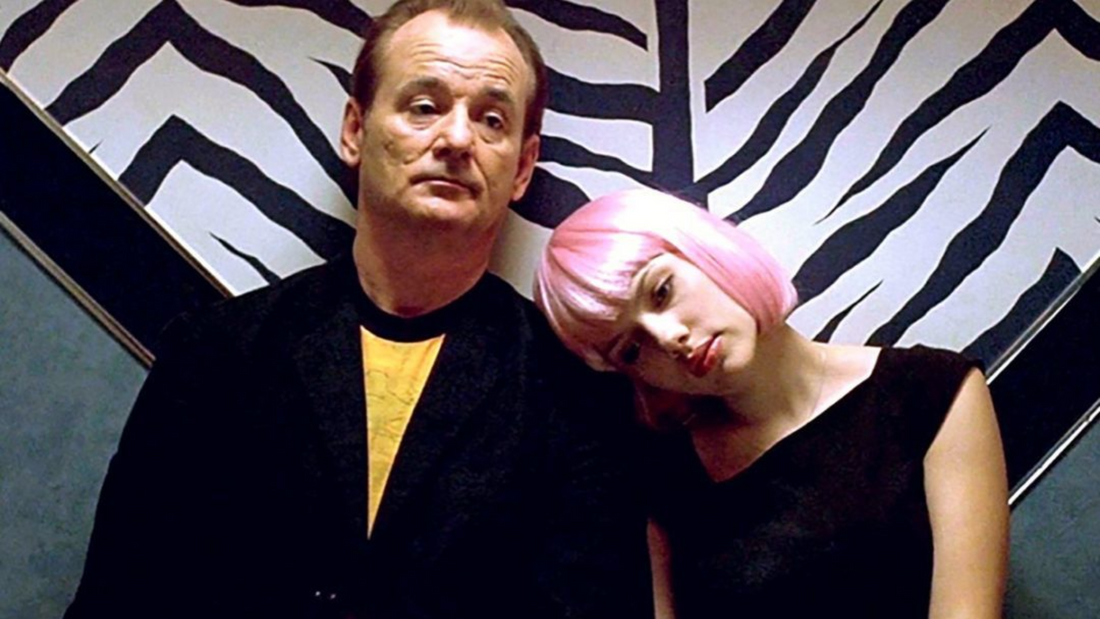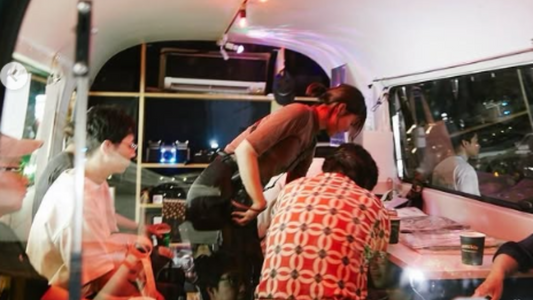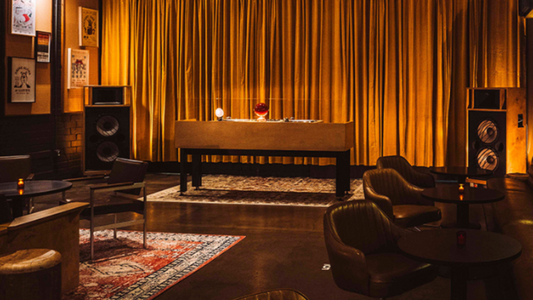
Lost in Translation
By Rafi Mercer
I’ve watched Sofia Coppola’s Lost in Translation more times than I can count. At first, I couldn’t explain why it held me. A quiet film, meandering, low on plot. But lately I think I understand: it isn’t about the story on the surface, but about the textures beneath it — the sound, the silences, the whisky, the dislocated feeling of being both lost and profoundly alive.
The film is remembered for its images — neon Tokyo streets, hotel bars, the cool blues of late-night interiors — but for me it’s always been the sound that matters. The hush of elevators, the muffled chatter in lobbies, the whisper of voices across karaoke microphones. Coppola lets silence carry as much weight as dialogue. Watching it is less like following a narrative and more like sitting in a listening bar: you’re invited to tune in, to notice atmosphere, to feel the resonance of pauses.
Then there’s the whisky. Suntory, specifically, poured with ceremony in a glass that glows amber against the bar’s polished wood. “For relaxing times, make it Suntory time.” Bill Murray’s delivery became a meme, but the whisky itself is central. It embodies the ritual of stillness, the way a drink can frame the act of listening. Watching those scenes now, I see the connection to the kissaten and listening bars I’ve spent time in: records spinning, glasses raised, the drink and the music becoming part of the same atmosphere.
The soundtrack, too, is essential. Air’s “Alone in Kyoto,” My Bloody Valentine’s “Sometimes,” Phoenix’s “Too Young.” Songs that hover between melancholy and euphoria, drifting like thoughts. They don’t just decorate the film — they are the film. Coppola used them the way a listening bar DJ uses vinyl: to colour the space, to guide the mood, to deepen the silence between notes. The film moves like a playlist, each track a frame of emotion, each pause a beat.
I realise now why I kept returning to it. Lost in Translation is about being out of place but finding meaning in fragments — in a song, in a glass, in a fleeting connection with someone who happens to be listening at the same frequency. That feeling is the same one I’ve always chased in music. Sometimes you don’t understand why a record pulls you in. Only later do you realise it was mirroring your own state — restless, searching, open to being surprised.
The film is also about attention. In a world where everything moves too quickly, Coppola slows us down. Scenes linger longer than we expect, silences stretch, music plays almost in full. We’re given time to notice small things — the look on Scarlett Johansson’s face as she stares out at the city, the quiet dignity of Murray’s character as he sits with his whisky, the way a song bleeds from one scene into another. This is cinema as listening exercise: patience, presence, immersion.
In that sense, Lost in Translation is almost prophetic. Made in 2003, it anticipated the global appetite for what listening bars now represent — spaces where people come not to escape noise with more noise, but to hear carefully curated sound paired with a drink that slows you down. The whisky in the film isn’t a product placement so much as a symbol: a marker of ritual, of taking time, of savouring a moment that might otherwise pass unnoticed.
Looking back, I think I was drawn to the film because it carried the same DNA as the music I loved. It was built on atmosphere, silence, detail. It trusted the audience to lean in, to feel without explanation. And in its mixture of melancholy and joy, solitude and connection, it carried the same emotional complexity as the best records.
So yes, I understand now why I’ve watched it so often. Lost in Translation is not just a film. It is a listening bar on screen: whisky in hand, music drifting, silence honoured. A reminder that even when we feel most adrift, there is always meaning in the sound around us — if only we take the time to hear it.
Rafi Mercer writes about the spaces where music matters. For more stories from Tracks & Tales, subscribe here, or click here to read more.






